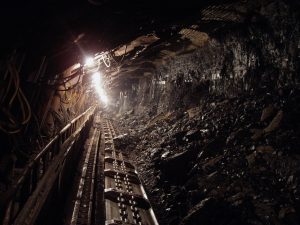Print a Sign-In Sheet | Spanish Version Coming Soon
As a coal miner, have you ever thought about how many different jobs we do each day at work, and how many different ways there are to be injured? Whether or not you consider the risks, safety should be at the forefront for all of us in the mining industry.
Let’s just take one of the jobs we do every day and consider how we can prevent injuries. Incidents can occur during the simplest of tasks, such as removing or installing brattices, especially in higher areas of the mine.
While building stoppings and overcast walls, twisting, pulling, lifting, eye injuries, fall hazards, and draw rock are some of the most common injuries that may occur.
Let’s look at what it takes to build a stopping safely:
First, perform a workplace exam. Numerous injuries can be prevented if this simple, but critical step is taken before starting any task. Observe the roof and ribs; are there any loose materials that you see that needs to be removed? If you don’t see any loose roof or rib material, do a sound and vibration test to reveal any loose material and take down as needed.
Second, look the area over. Is the area clear of tripping hazards? Is there anything that needs to be removed from the area? If so, remove the tripping hazard before you start the job.
Third, identify where the materials are that you will need to complete the task. Do you have all the tools to do the job safely, including proper personal protective equipment (PPE) and cutting tools, and are they in good condition? Are they close to the area where the stopping or overcast wall is to be constructed? Can you get them closer? Sometimes this is almost impossible to get them exactly where you need them, but you can still make it safe by clearing a path and using proper lifting procedures. Also, making sure you have the correct PPE to do the job is just as important as having the right tools. Gloves while handling the materials, glasses when cutting the block, dust mask while mixing the sealant, and metatarsal boots just in case we drop a block on our foot.
Lastly, think “safety first” with every move you make. Don’t twist with a load, bend at the knees, keep your back straight and head down, and align the spine. Use your legs to lift and not your back
Continue to do workplace exams as you work. With hammering, tightening, and moving, some material may have become loose or the pallets that the material was on is now in the way of the next pallet and needs to be moved. An ongoing workplace exam is important to your safety. Don’t forget to do it.
KEMI does not assume liability for the content of information contained herein. Safety and health remain your responsibility. This information is to be used for informational purposes only and not intended to be exhaustive or a substitute for proper training, supervision, or manufacturers’ instructions/recommendations. KEMI, by publication of this information, does not assume liability for damage or injury arising from reliance upon it. Compliance with this information is not a guarantee or warranty that you will be in conformity with any laws or regulations nor does it ensure the absolute safety of any person, place, or object, including, but not limited to, you, your occupation, employees, customers, or place of business.

